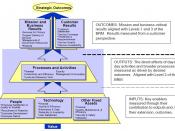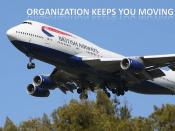Formulating strategy often commence with an assessment of the internal and external factors that will affect the organization's competitive situation. Situation Analysis typically includes a search for strengths, weaknesses, opportunities and threats that affect organization performance.
Situation Analysis is important to all companies but is crucial to those considering globalization because of the diverse environments in which they operate.
Customers, government reports, professional journals, suppliers, bankers, friends in other organizations, consultants, or association meetings may include external information about opportunities and threats.
Many companies are hiring competitive intelligence professionals to scope out competitors.
Surveys of employee attitudes and satisfaction are attained information that executives gather including internal strengths and weaknesses from various reports, budgets, financial ratios, and profit and loss statements. Managers spend 80% of their time giving and receiving information. Executives build an understanding of the company's internal strengths and weaknesses through face-to-face discussions and meetings with people at all hierarchical levels.
Positive internal characteristics that the organization can take advantage of, to achieve its strategic performance goals are its strengths.
Internal characteristics that might inhibit or restrict the organization performance goals are its weaknesses.
Characteristics for the external environment that have the potential to help the organization achieve or exceed its strategic goals are opportunitiesQuestion for understanding:Are threat characteristics of the external environment preventing some organizations for achieving it strategic goals?YesChap 6Increasing Participation in Decision MakingManagers make some decisions as individuals but decision makers are more often part if a group. Major decisions in the business world are rarely made entirely by an individual. Effective decision-making often depends on whether managers involve the right people in the right ways in helping to solve problems. The Vroom-Jago model is an example of guidance for practicing mangers. Vroom-Jago model helps a manager gauge the appropriate amount of participation by subordinates...


